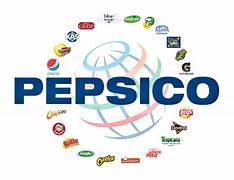

Uber-Popular sports drink company BioSteel bit the dust this month.
The company founded in 2009 by former NHL’er Mike Cammalleri and John Celenza was the talk of the Canadian sports drink market for many years. Everwhere one looked, they’d see Patrick Mahomes throwing a touchdown with a BioSteel T Shirt on, or Conor McDavid scoring a ridiculous goal with a BioSteel jersey on.
But all of this comes at a cost. A premium cost.
This is the paradox of business ownership – business owners want to “get their name out there” and increase revenues/sales. The old adage “you have to spend money to make money” generally doesn’t apply when you’re burning through $15 million a month, but hey.
To find the root of the problem… Lets run it back to 2019.
Canopy Growth bought a 72% stake in BioSteel for $50.7 million . This was an all-cash transaction, which makes sense because Canopy Growth had lots of cash back then. How? Not from the profits of their marajuana business… but from investors buying company stock thinking marajuana companies were going to be profitable. Which they are not. Don’t believe me? Go look at Aurora Cannibis’ financial statements (click here, we made it easy for ya). Big big money losers. Cannot scale. I can go on for days, but I’ll stop.
BioSteel – fresh with a new piggybank behind them – decided to ramp up its marketing. In 2020, BioSteel inked Patrick Mahomes to be a spokesperson . The Mahomes signing was just the tip of the iceberg; BioSteel have some of the highest profile athletes in North America in its stable, including but not limited to Andrew Wiggins, Luka Doncic, Jalen Ramsey (FSU boy go Noles), Wayne Gretzky, Conor Mcdavid, on and on and on. BioSteel inked deals to be the official drink of the NHL, various NBA teams, USA Hockey, USA Soccer…


In short – BioSteel was spending a LOT of money. Money that the company – and its parent company – wasn’t making.
According to CBC “the CCAA filing was undertaken because the company (Biosteel) no longer has access to funding for the brand, which continued to generate negative operating cash flow” which in laymen’s terms means
“We ran out of investor money to spend; neither one of our brands turns a profit but we turned a blind eye to it and kept spending anyway!”
BioSteel’s first 3 months of sales revenue in 2023 – $24,000,000
BioSteel’s cost of goods sold in that same period – $90,000,000
BioSteel’s other expenses in the same period – $114,000,000 (increased $12M since 2022 same Q)
You do not need a business degree (hell even a business course) to figure out that this business party was eventually going to get busted. Imagine manufacturing a beverage that – for every dollar it makes – costs over $3 to produce. No matter how much marketing you do to promote your product, you’re NEVER going to make money if your expenses are higher than your revenues.
What Happens to BioSteel?
Anyone want to make any bets that one of these two GREAT companies (Pepsico or Coca-Cola) buys BioSteel for pennies on the dollar and seamlessly integrates it into their portfolio or sports drinks? Pepsico or Coca-Cola will have to figure out a way to manufacture BioSteel at a much cheaper cost – maybe it’s cheaper ingredients, maybe it’s cheaper packaging, maybe it’s cheaper machinery used to make the drinks. Maybe a combination of all of the above.
At the very least – whoever buys BioSteel will get a brand that people are familiar with.


Pepsico OWNS snacktime. If you didn’t know, now you know.
How Future Entrepreneurs Can Learn From This
The first lesson for up-and-coming entrepreneurs is that spending frivolously – regardless of business size – is a fools errand.
If you’re going to invest a lot of money into marketing/branding, do so with company profits. If your profits are very small, look into borrowing money but be wary of interest rates (aka the extra money that the banks tack on to the borrowed money).
No company can be profitable if its cost of goods sold (COGS) is more than 70% of its revenue. What this means is if it costs you 70 cents to make a product that you sell for a dollar, it’s going to be awfully hard to make money. The reason for this is simple – COGS is only one small portion of a company’s expenses. Don’t forget about General/Administrative expenses, marketing expenses, salaries of employees, etc etc etc.
Until Next Time
AP
